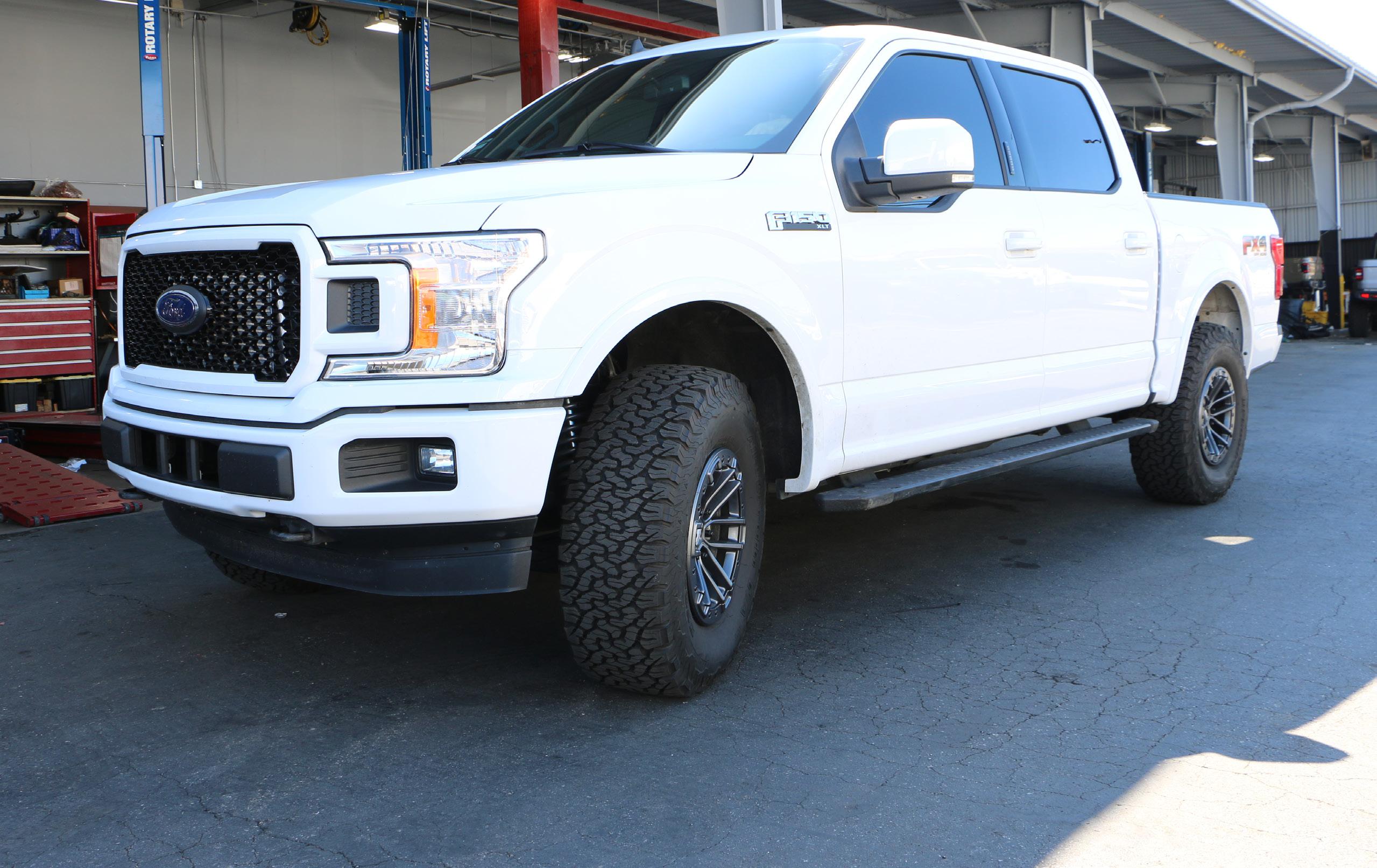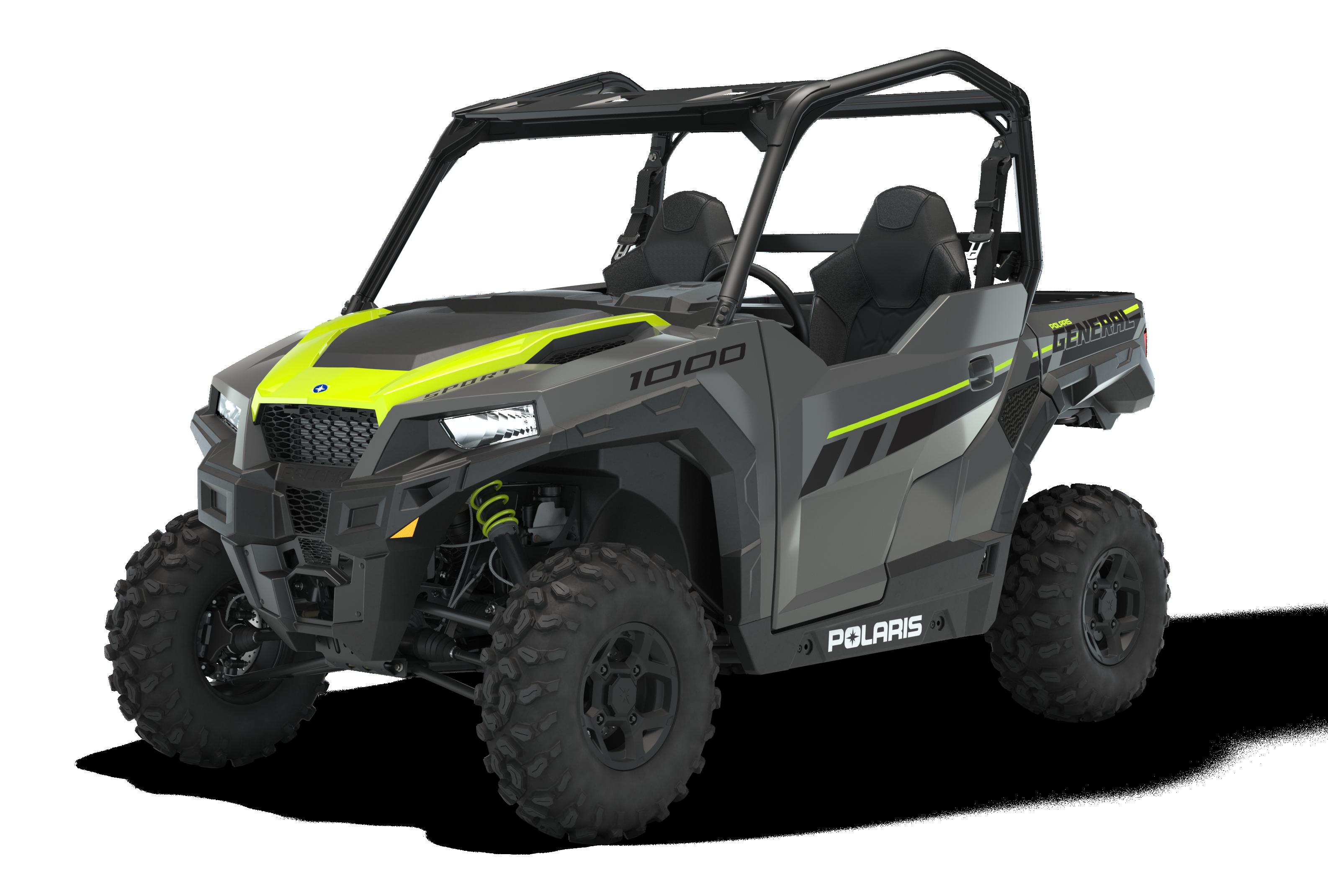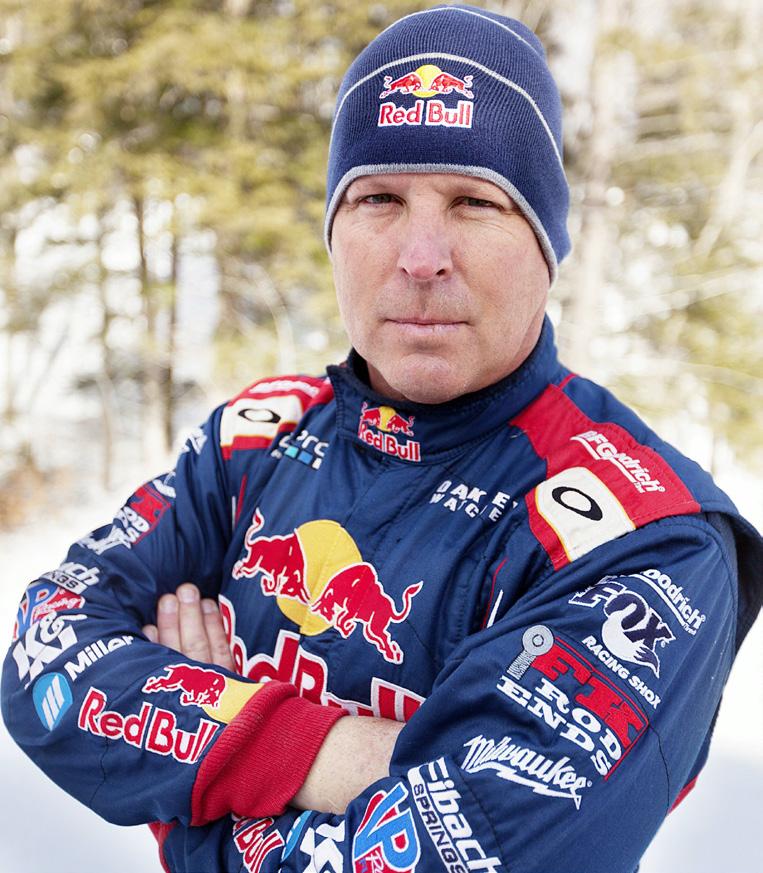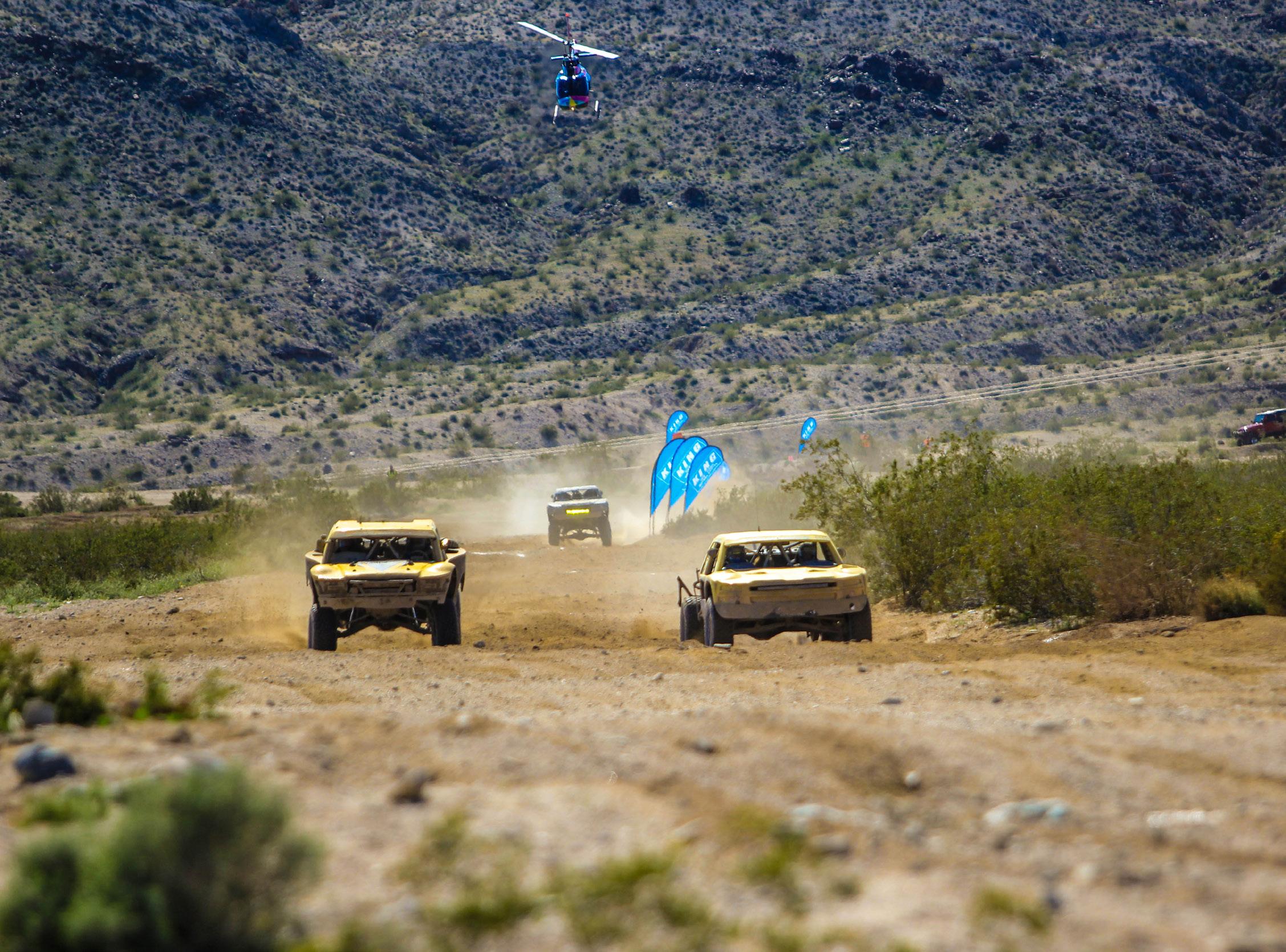7 minute read
ALCAN 5000: A SUB ZERO RALLY ON STERIODS
A Sub-Zero Rally on Steroids: the 2020 Alcan 5000 Rally
WORDS AND PHOTOS BY: MERCEDES LILIENTHAL

Sliding sideways, sub-zero bonechilling temps, and almost hitting a wolf on the Dempster Highway near the Arctic Circle equals an epic Arctic adventure! Rally entrants experienced unexpected challenges, thousands of miles of snow- and ice-covered severity, and a rally that would reveal their inner strengths and weaknesses. This was the 2020 Alcan 5000 Rally—the Mother of all winter rallies. ALCAN 5000 RALLY

What is the Alcan 5000 Rally?
Boasting over 5,120 total rally miles (and then some), this year’s rally spanned from Kirkland, Washington due north through all of Canada (including Whitehorse, Yukon Territory to Tuktoyaktuk and the Arctic Ocean which is located in the Northwest Territories). But, that was just a small section of the Arctic winter competition. Contestants ventured from the top of the Earth back down to Whitehorse and skipped over to Fairbanks, Alaska in order to eventually finish in Anchorage the day before the famed Iditarod dog sled races started. An Arctic rally, the 48th annual running of the Iditarod dog sled races, and even a kooky pre-Iditarod event called the Running 24 | DIRTSPORTSWORLD.COM

of the Reindeer made for a true Arctic and Alaskan adventure contestants won’t soon forget. Who would be crazy enough to combine severe snow-induced travel with lack of sleep, constant concentration, vehicular woes, and 10 draining days of long hours to complete the Alcan 5000 Rally? Add to that a multitude of mini-TSD (time, speed, distance) competitions, an ice race in Dawson City, and optional jaunts to Tuktoyaktuk, NT Coldfoot, AK or Aklavik, NT via an ice road on top of it all? Over 40 teams said yes to the Arctic-inducing adventure (including well-known Ultra4 guys like Dave Cole and Loren Healy, as well as other racers or industry folks like Ray Currie and Mel Wade). Teams traveled to Kirkland, WA from all across the country to start the rally.
Of 41 vehicles, 38 started the late February rally (teams #4, #16, and #28 didn’t compete due to medical or other reasons). Of the 38 starters, 37 teams finished in Anchorage (car #17 had issues with their alternator and brakes but ultimately their Subaru Impreza developed rod knock and seized). It was towed the last 100+ miles to the finish line. The Alcan 5000 Rally started in 1984 and runs every two years (summer, then winter, then summer, and so on). Still a grass-roots rally, the Alcan 5000 puts man (and woman), plus machine to extreme tests of longevity, rough terrain, bitter cold, and stamina. Whereas races typically take place on closed courses or trails, rallies or TSDs are competitions that are at or below posted speeds on open public roads where other traffic is often found.



Rod Hall Tribute Mitsubishi Pajero
In the 1986 summer rally, the late great racer Rod Hall and his teammate competed in the Alcan 5000 with a Mitsubishi-built Dodge Raider, a sister vehicle to the 1991 Mitsubishi Pajero my husband, Andy Lilienthal, and I drove for 2020. Although their Raider was a Gen 1 gas-powered 4x4, ours was a Gen 2 Japanese Domestic Market (JDM) diesel variant. Since Rod passed away last year, the owner of the Alcan 5000 Rally, Jerry Hines, asked if we’d run the Historical Class in honor of Rod and his Arctic trek. We DIRTSPORTSWORLD.COM | 25
were honored and agreed to represent him. Rod’s team was one of only five teams to reach Inuvik, Northwest Territories, of everyone that participated. We followed suite to shadow Rod’s footsteps with our winter rally, and accomplished the exact same goal he did—but heading back south the next day wasn’t easy. ALCAN 5000 RALLY

After reaching our goal to replicate Rod’s journey while getting only four hours of sleep the night before, we woke and were greeted with the coldest overnight temperature yet, -31° F (-54.4° F with the wind chill) in Inuvik. Although weary and cold, we packed up our gear and headed into the dead of night to pack up the Pajero. This was by far coldest we’ve started any vehicle, especially an old JDM diesel 4x4. Credit: Rod Sorenson

Crunching through the snow, we trudged to our machine with heavy backpacks, to hear deafening silence. No whirring noises coming from the Webasto coolant heater we installed for this trip. “Low voltage” read its control panel. What do we do now?!? This coolant heater was programmed to keep the engine warm during extreme cold temps so the diesel fuel wouldn’t gel up. Thankfully, there‘s a manual mode so we turned it on and loaded the rest of our gear. After an anxious 10 minutes, we fired up the Pajero. It cranked strong and with a few tries, it clanged and banged its way into a semi-normal stuttering fashion. The Webasto, along with our Optima Battery Red Tops, saved the day! We later learned our 26 | DIRTSPORTSWORLD.COM

system, the Webasto’s Thermo Top Evo, can be programmed with to shut off if it hits a specific voltage level of the battery (we had ours set high as a precaution). The system and batteries must have been at that level— the Webasto was designed to shut off at this point to give the batteries the best chance at starting. And that, it did. The 762 mile trek from Inuvik, NT to Whitehorse, YT spanned nearly 15 hours on groomed ice- and snow-covered roads. The Klondike and Dempster highways offered up vast views of bluebird skies as we traversed its miles, but don’t let the weather fool you as it tried to do with us. Perfectly still conditions can kick up a lot of snow dust and showcase tricky terrain with scary situations.
Helping One Another Miscellaneous mutterings across radio channels shared tales of broken windshields, vehicular issues, and an abundance of street-side wildlife viewing prospects. Those in the lead of random designated rally packs called out emergency situations, whether oncoming semis giving little room, someone in the ditch, or an occasional moose or caribou herd in the middle of the road. Alcan 5000 ralliers were paired up with one or two “buddy cars”, vehicles close in assigned rally numbers as each rig takes off the start line in one minute increments. Our buddy rigs consisted of two other 4x4s: #38 Team Anyway (JR and Judy Russel from Washington) in a two-door Jeep Wrangler Rubicon and #40 Garrett and Kristen Arendt (hailing from Colorado) in a Lexus GX470. With the Lexus in the lead, the Pajero usually ran between the two or brought up the rear. Since we were the last competitors to jump off the wait list to join this year’s rally, we received the last starting positions. Last one out, hence the last one in every night. We jokingly called ourselves Team Back of the Bus—by the time we got fuel and headed to the hotels, restaurants were usually closed with other ralliers already heading to bed. In addition to nearly 40 teams competing for the rally crown, several support vehicles, including three sweeps teams, were there to assist: two Dodge RAMs and a Ford Raptor. Sweeps kept quite busy helping ralliers in need with a variety of issues. While the Alcan 5000 Rally is a beast of a rally to compete in, especially in the winter, those who organized it, managed it, and competed in it continually came together to help each other out. The sense of comradery was outstanding. People checked on each other, loaned equipment or tools to each other, and lifted each other up when someone was having a rough day. The Mother of all winter rallies showcased a team atmosphere we’ve not quite experienced anywhere else. A unified, traveling community whose memories will far outshine the challenges that happened along the way. The formidable bond between the 2020 Alcan 5000 Rally group will be forever long—chipped windshields and body damage included. A SUB-ZERO RALLY ON STERIODS










